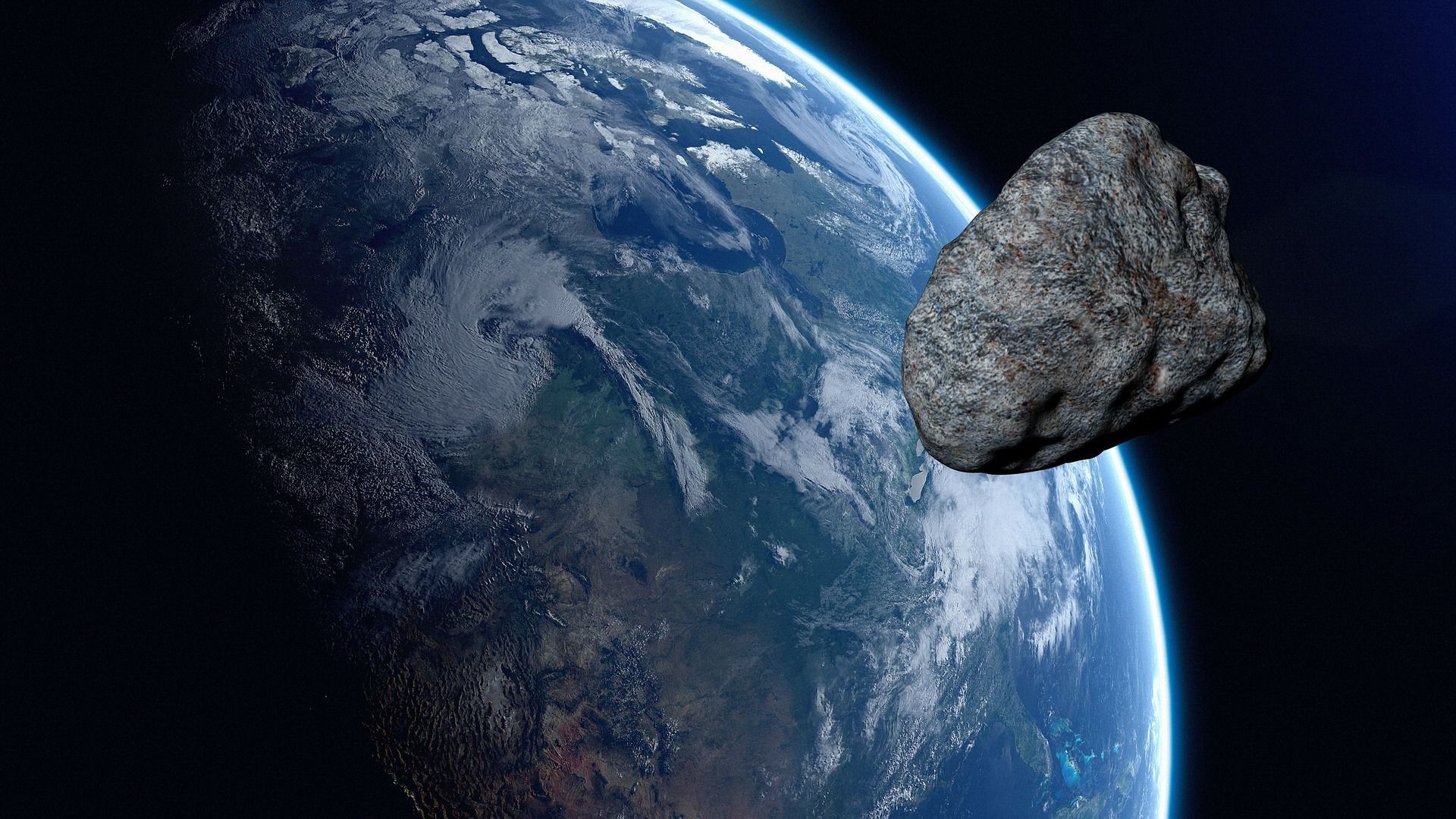https://sputnikglobe.com/20220306/potentially-dangerous-space-rock-3-times-bigger-than-empire-state-building-skims-past-earth-1093635523.html
'Potentially Dangerous’ Space Rock 3 Times Bigger Than Empire State Building Skims Past Earth
'Potentially Dangerous’ Space Rock 3 Times Bigger Than Empire State Building Skims Past Earth
Sputnik International
A near-Earth object is deemed a threat if it is projected to come within 7.4 million km of our planet and is at least 140 metres in diameter. While there is... 06.03.2022, Sputnik International
2022-03-06T13:34+0000
2022-03-06T13:34+0000
2022-03-06T13:35+0000
asteroid
nasa
jet propulsion lab
https://cdn1.img.sputnikglobe.com/img/107910/12/1079101273_0:0:1920:1080_1920x0_80_0_0_b35ef316c4a2d8961c9599291130f047.jpg
A gigantic "potentially hazardous" asteroid zoomed past Earth on 4 March at what the US space agency, NASA, warned was a "close" distance to our planet. Asteroid 138971 (2001 CB21) is said to be up to 4,265 feet wide - almost three times as big as the Empire State Building, with NASA having previously placed it on its 'Earth Close Approaches' list. The Virtual Telescope Project 2.0.enabled space enthusiasts to watch the asteroid as it shot past Earth from an estimated distance of 3 million miles away. One could also track Asteroid 138971 (2001 CB21) virtually at NASA Jet Propulsion Laboratory's Small-Body Database Lookup website. The next asteroid of considerable size to potentially hit Earth is the 164-foot (50-metre) space rock 2005 ED224. However, when skimming past our planet on 11 March 2023, there is roughly a 1 in 500,000 chance of any impact. Asteroids are chiefly found in three areas of the solar system, with a majority located in a large ring between Mars and Jupiter’s orbits. According to astronomers, near-Earth objects include asteroids and comets whose orbits are on course to bring them within 120 million miles (193 million kilometers) of the Sun. A near-Earth object is deemed a threat if it will approach within 4.6 million miles (7.4 million km) of Earth and measures at least 460 feet (140 meters) in diameter.The most famous and destructive impact with a celestial object occurred 65 million years ago when an asteroid estimated to have been 6-miles (10-km) in diameter crashed into what is now the Yucatán Peninsula, wiping out most plant and animal species on Earth, including the dinosaurs.As of 14 February 2022, astronomers have located 28,266 near-Earth asteroids, with new objects added each week.NEO Surveyor, a space-based infrared telescope designed to survey the Solar System for potentially hazardous asteroids, is scheduled to be launched in 2026.NASA authorized the mission to proceed to the preliminary design phase on 11 June 2021, spearheaded by the Jet Propulsion Laboratory.
https://sputnikglobe.com/20220202/earth-being-followed-by-trojan-asteroid-which-one-day-might-be-visited-by-humans-1092685358.html
Sputnik International
feedback@sputniknews.com
+74956456601
MIA „Rossiya Segodnya“
2022
News
en_EN
Sputnik International
feedback@sputniknews.com
+74956456601
MIA „Rossiya Segodnya“
Sputnik International
feedback@sputniknews.com
+74956456601
MIA „Rossiya Segodnya“
asteroid, nasa, jet propulsion lab
asteroid, nasa, jet propulsion lab
'Potentially Dangerous’ Space Rock 3 Times Bigger Than Empire State Building Skims Past Earth
13:34 GMT 06.03.2022 (Updated: 13:35 GMT 06.03.2022) A near-Earth object is deemed a threat if it is projected to come within 7.4 million km of our planet and is at least 140 metres in diameter. While there is currently no imminent “doomsday asteroid” heading towards Earth, research suggests the planet’s rotation creates a blind spot whereby some asteroids might be undetected.
A gigantic "potentially hazardous"
asteroid zoomed past Earth on 4 March at what the US space agency, NASA, warned was a "close" distance to our planet.
Asteroid 138971 (2001 CB21) is said to be up to 4,265 feet wide - almost three times as big as the Empire State Building, with NASA having previously placed it on its 'Earth Close Approaches' list.
The Virtual Telescope Project 2.0.enabled space enthusiasts
to watch the asteroid as it shot past Earth from an estimated distance of 3 million miles away.
One could also
track Asteroid 138971 (2001 CB21) virtually at NASA Jet Propulsion Laboratory's Small-Body Database Lookup website.
The next asteroid of considerable size to potentially hit Earth is the 164-foot (50-metre) space rock 2005 ED224. However, when skimming past our planet on 11 March 2023, there is roughly a 1 in 500,000 chance of any impact.

2 February 2022, 14:01 GMT
Asteroids are chiefly found in three areas of the solar system, with a majority located in a large ring between Mars and Jupiter’s orbits. According to astronomers, near-Earth objects include asteroids and comets whose orbits are on course to bring them within 120 million miles (193 million kilometers) of the Sun. A near-Earth object is deemed a threat if it will approach within 4.6 million miles (7.4 million km) of Earth and measures at least 460 feet (140 meters) in diameter.
The most famous and destructive impact with a celestial object occurred 65 million years ago when an asteroid estimated to have been 6-miles (10-km) in diameter crashed into what is now the Yucatán Peninsula, wiping out most plant and animal species on Earth, including the
dinosaurs.
As of 14 February 2022, astronomers have located 28,266
near-Earth asteroids, with new objects added each week.
NEO Surveyor, a space-based infrared telescope designed to survey the Solar System for potentially hazardous asteroids, is scheduled to be launched in 2026.
NASA authorized the mission to proceed to the preliminary design phase on 11 June 2021, spearheaded by the Jet Propulsion Laboratory.



